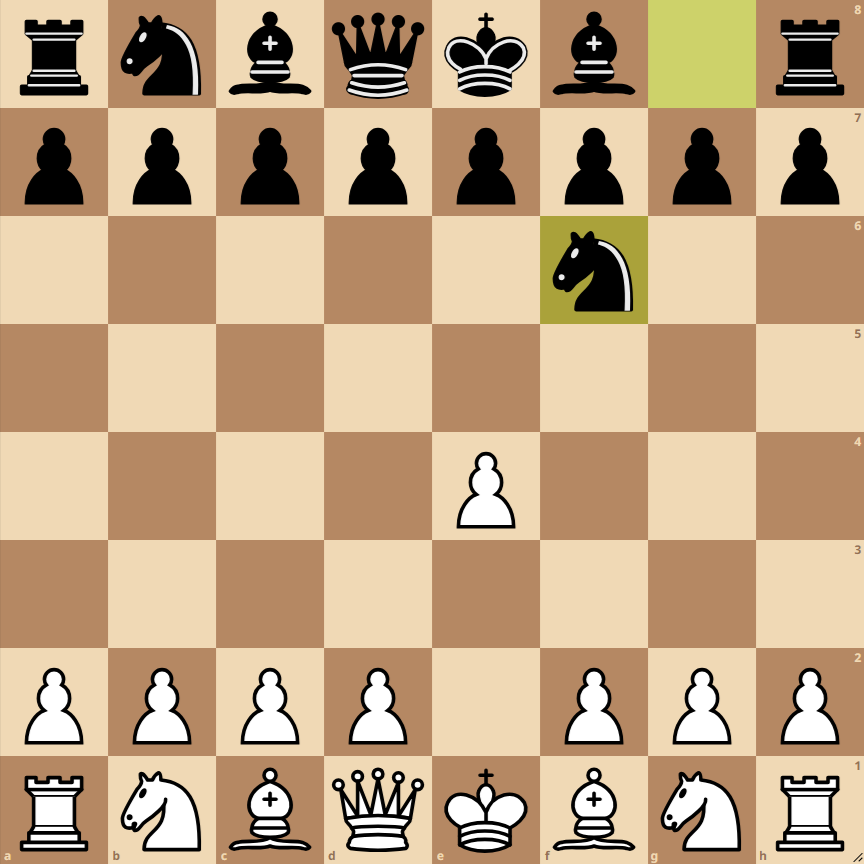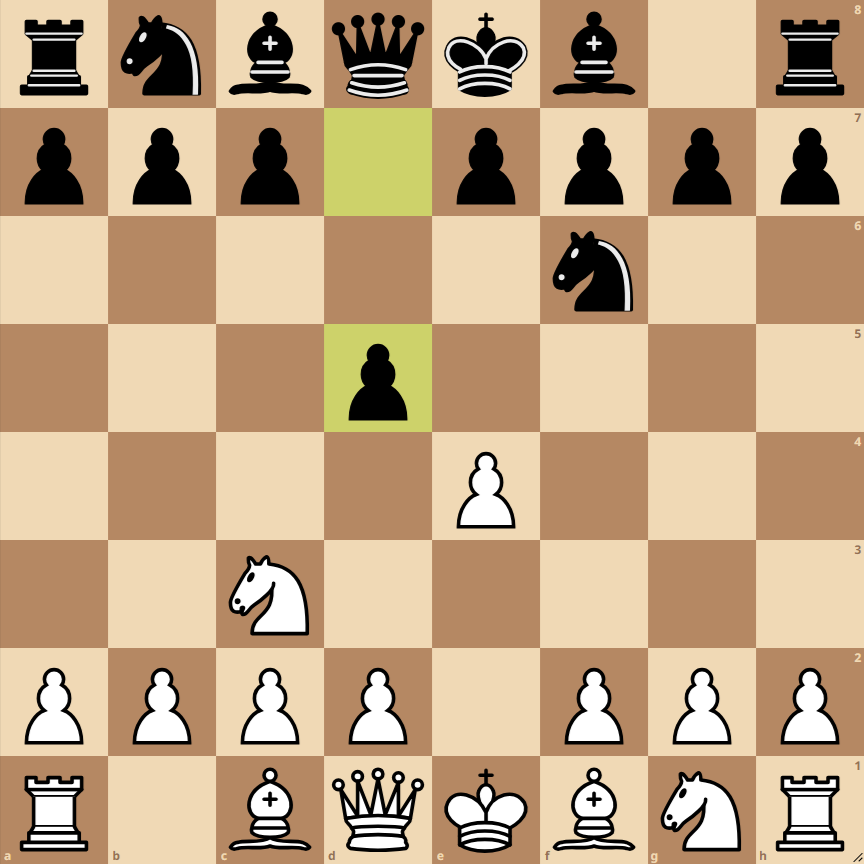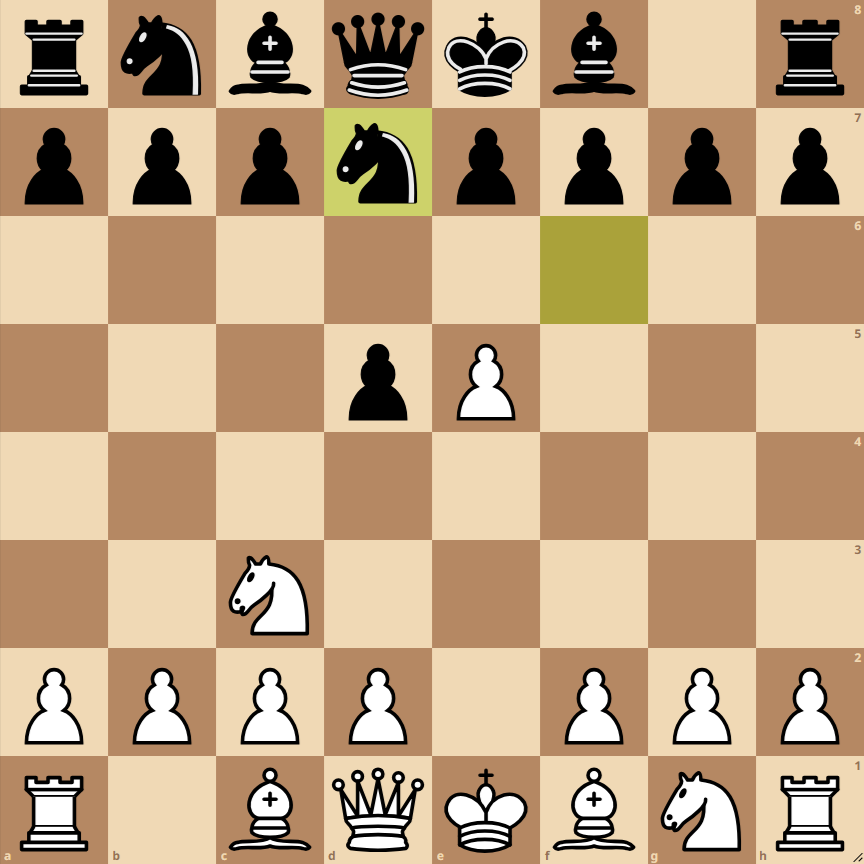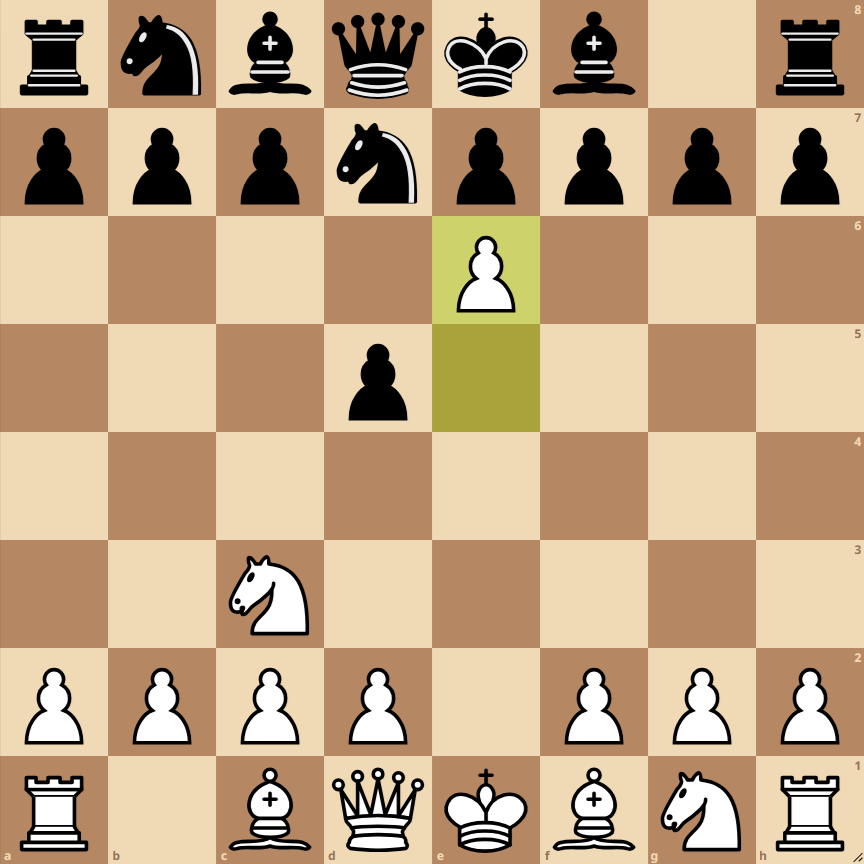How to Play the Alekhine Defense – Spielmann Gambit Opening



- 1. e4: The game begins with the advance of the king’s pawn, controlling the center and freeing the queen and bishop.
- 1… Nf6: Black responds with the knight to f6, attacking the e4 pawn and preparing for a quick piece mobilization.
- 2. Nc3: White develops their knight to the king’s side, protecting e4 and preparing possible central advances.
- 2… d5: Black challenges the center with their queen’s pawn, aiming to activate their pieces and balance central control.
- 3. e5: White advances their e4 pawn, displacing the black knight and gaining space in the center.
- 3… Nfd7: The black knight retreats, repositioning for possible retreats or counterattacks.
- 4. e6: An aggressive move aiming to destabilize the black pawn structure and open lines for an attack.
Variants of the Alekhine Defense – Spielmann Gambit
Variant 1: 2… e5
In this variant, Black plays 2… e5, aiming to control the center and limit White’s options. It leads to a more closed pawn structure and positional play.
Variant 2: 4… fxe6
Black can choose to capture the pawn on e6 with the f-pawn. This opens the f-file for Black and leads to a more dynamic game, although it weakens the defense of the black king.
Variant 3: 4… c5
With 4… c5, Black seeks counterplay in the center and challenges White’s pawn chain. This line can lead to asymmetric pawn structures and a complex game.

